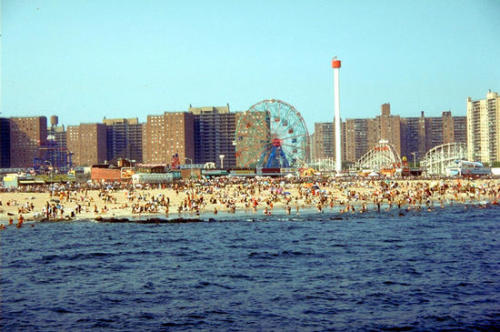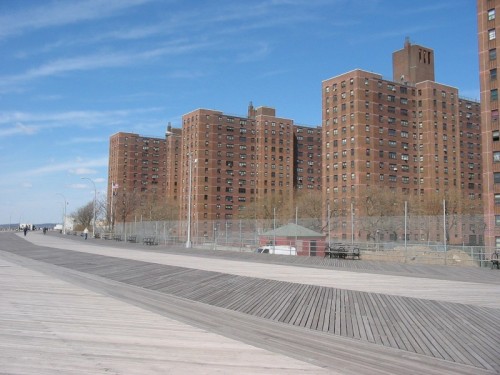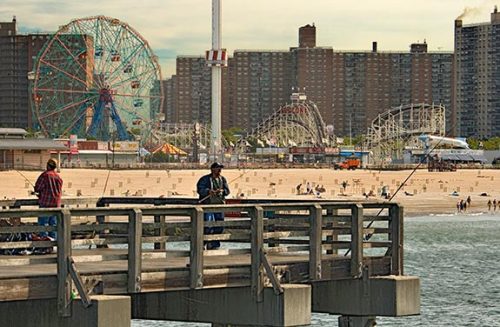Coney Island, Soon destroyed and gentrified

Accessible to anyone for the price of a subway ride, the beachfront amusement spot of Coney Island has given working-class New Yorkers a holiday ever since a kerosene-lit carousel opened here in 1867.

In the high season: between Memorial Day and Labor Day, hip-hop blares over the sound-systems, the language of choice on the boardwalks is Spanish or Russian as often as English.

You have to be in the right frame of mind; this is not your typical corporate fun-park. On weekddays, rainy days, and in the off-season, the festive atmosphere can totally dissapear, making for an experience that's bittersweet, if not downright depressing and even a bit creepy.
The majority of Coney Island's population resides in approximately thirty 18- to 24-story towers, mostly comprised of various forms of public housing.

In between the towers are many blocks that were filled with burned out and vacant buildings. Since the 1990s there has been steady revitalization of the area. Many townhouses were built on empty lots, popular franchises have set up shop, and Keyspan Park was built to serve as the home for the Cyclones, a minor league baseball team in the New York Mets' farm system. 
Once home to many Jewish residents, most of those living on Coney Island today are African American, Italian American, or Hispanic
